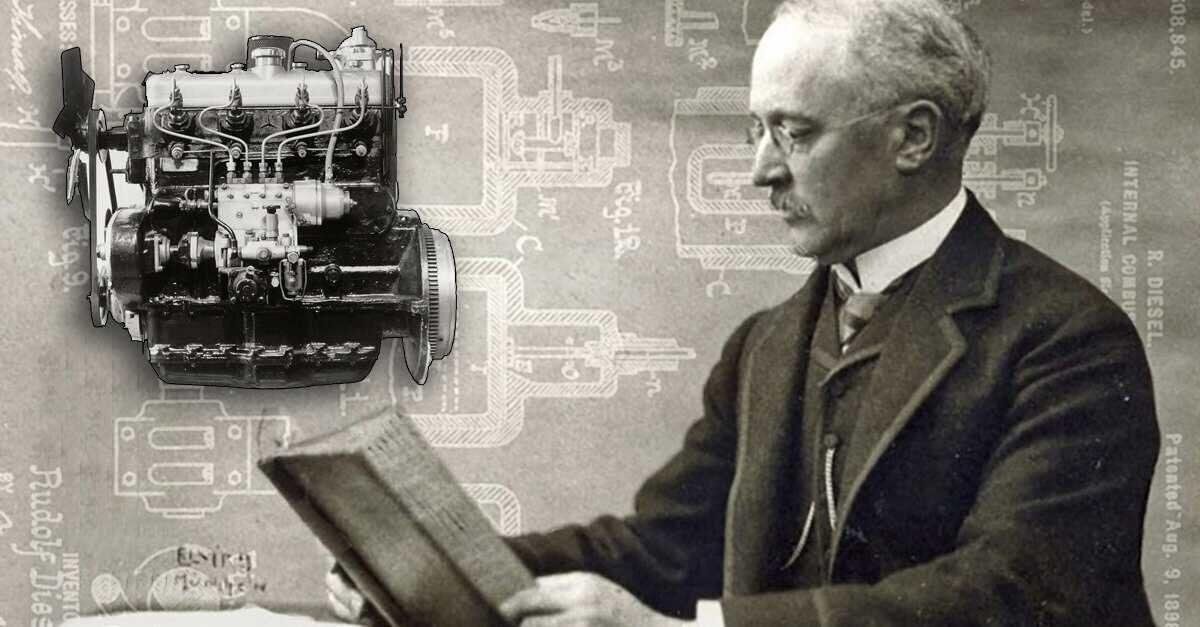Rudolf Diesel, a visionary engineer and inventor, is best known for developing the compression-ignition engine, which bears his name today: the diesel engine. Born in Paris in 1858, Diesel’s invention changed the transportation and industrial sectors, providing a more efficient and powerful alternative to steam engines and gasoline engines of the time. His journey was one of scientific curiosity, intense dedication, and ambition to create a more efficient and economically viable engine. Diesel’s legacy continues to shape modern industry, influencing everything from cars to ships, construction equipment, and power generation.
Early Life and Education

Rudolf Christian Karl Diesel was born on March 18, 1858, to German parents in Paris, France. The Diesel family moved to London due to the outbreak of the Franco-Prussian War in 1870, and young Diesel was soon sent to Augsburg, Germany, to live with relatives. His passion for mechanics and engineering emerged early, and in 1875 he enrolled at the Royal Bavarian Polytechnic of Munich to study mechanical engineering. Under the mentorship of Professor Carl von Linde, a renowned refrigeration expert, Diesel developed a keen interest in thermodynamics, which would later become the foundation of his work.
Diesel’s education emphasised the importance of fuel efficiency and energy conservation. While steam engines were the primary source of power at the time, Diesel recognized their limitations in terms of fuel consumption and efficiency. This understanding pushed him toward inventing an engine that would be more economical and effective.
The Concept of the Diesel Engine

By the 1890s, Diesel was deeply invested in developing a new type of engine based on the principles of thermodynamics. He wanted to create an engine that could convert heat energy directly into mechanical energy, which would allow for greater efficiency. The primary problem Diesel sought to address was the excessive fuel consumption and high costs of steam engines.
The diesel engine’s concept was revolutionary for its time: rather than relying on external ignition (like a spark plug in gasoline engines), Diesel’s engine operated using compression ignition. This process relied on compressing air to such a high degree that the heat generated would ignite the fuel on contact. Diesel’s idea offered two main advantages: improved fuel efficiency and a broader range of fuel compatibility.
Diesel worked on a principle known as the Carnot Cycle, which describes the most efficient way to convert heat into work in a closed system. Inspired by this principle, Diesel set out to design an engine that could maximise fuel efficiency by harnessing the energy of compressed air. In theory, the process would generate immense power while reducing fuel consumption.
Trials, Successes, and the Diesel Engine Patent
Developing the diesel engine was a challenging endeavour, with numerous technical and financial obstacles along the way. Between 1893 and 1897, Diesel conducted extensive experiments to refine his engine’s design. His work was met with scepticism from some engineers and investors who doubted that a compression-ignition engine could be successful or that Diesel’s ambitious goals for efficiency could be met.
In 1897, Diesel’s hard work paid off when he successfully demonstrated a functional prototype of his engine at the Maschinenfabrik Augsburg plant. This early model, though large and less refined than modern engines, proved the concept of compression ignition. It achieved an efficiency rate significantly higher than any other engine of its time, marking a major breakthrough. Diesel’s invention was soon recognized as a game-changer, as it required less fuel and produced more power than traditional engines.
On February 23, 1893, Diesel filed a patent for his engine under the title “Method of and Apparatus for Converting Heat into Work.” This patent officially marked the birth of the diesel engine, and Diesel quickly secured additional patents internationally. His invention garnered attention from industry leaders worldwide, sparking interest in a variety of sectors, from manufacturing to transportation.
The Impact of Diesel’s Invention

The diesel engine rapidly transformed multiple industries, and Diesel’s invention was soon adopted for ships, trains, and factories. Diesel engines offered unparalleled efficiency and power compared to steam engines, and they became particularly popular in industries where reliability and endurance were essential.
One of the diesel engine’s key advantages was its fuel flexibility. Unlike gasoline engines, diesel engines could operate on a variety of fuel types, including vegetable oil, kerosene, and biodiesel. This adaptability opened up new possibilities for power generation in areas where gasoline and other fuels were scarce or expensive.
Diesel engines have evolved significantly since their inception, becoming more compact, powerful, and environmentally friendly. Innovations in fuel injection, turbocharging, and emissions control have made diesel engines cleaner and more efficient than ever. Today, they power everything from trucks, buses, and cars to agricultural machinery and backup generators, underscoring Diesel’s enduring influence on modern technology.
The Mysterious Disappearance of Rudolf Diesel
Despite his groundbreaking contributions, Rudolf Diesel’s life took a tragic and mysterious turn. On September 29, 1913, Diesel boarded the SS Dresden en route from Antwerp to London. He was travelling to attend a meeting with the British Navy, which was interested in using diesel engines for its submarines. However, Diesel never made it to his destination. He disappeared from the ship overnight, and his body was later found floating in the North Sea.
The circumstances surrounding Diesel’s death remain unclear. Some speculate that he may have committed suicide due to financial troubles, while others believe he may have been murdered by rival industrialists or political opponents who saw his invention as a threat. Diesel’s disappearance has added an air of mystery to his legacy, sparking numerous conspiracy theories and leaving many questions unanswered.
Diesel’s Lasting Legacy

More than a century after his death, Rudolf Diesel’s influence is still evident in countless applications of his engine. The diesel engine remains one of the most efficient and durable power sources, powering heavy-duty vehicles, industrial equipment, and backup power systems. Diesel’s emphasis on efficiency and fuel flexibility was ahead of his time, aligning with modern concerns about energy conservation and sustainability.
However, Diesel’s legacy is also complex. Diesel engines, while more fuel-efficient than gasoline engines, contribute significantly to air pollution due to the emission of nitrogen oxides and particulate matter. This has led to increased regulation and innovation to create cleaner diesel technologies, such as particulate filters and selective catalytic reduction.
Conclusion
Rudolf Diesel’s invention of the diesel engine was a monumental achievement that reshaped the industrial and transportation landscape. His commitment to efficiency and innovation has inspired generations of engineers and inventors, making him one of the most influential figures in modern engineering. Although Diesel’s life was cut short under mysterious circumstances, his legacy endures, highlighting the impact of one man’s vision to create a powerful, adaptable, and efficient engine.
Today, as industries seek more sustainable solutions, Diesel’s work serves as a reminder of the power of innovation in driving change. His engine’s evolution from a groundbreaking invention to a staple of modern machinery exemplifies the lasting importance of efficiency, adaptability, and dedication to progress.










